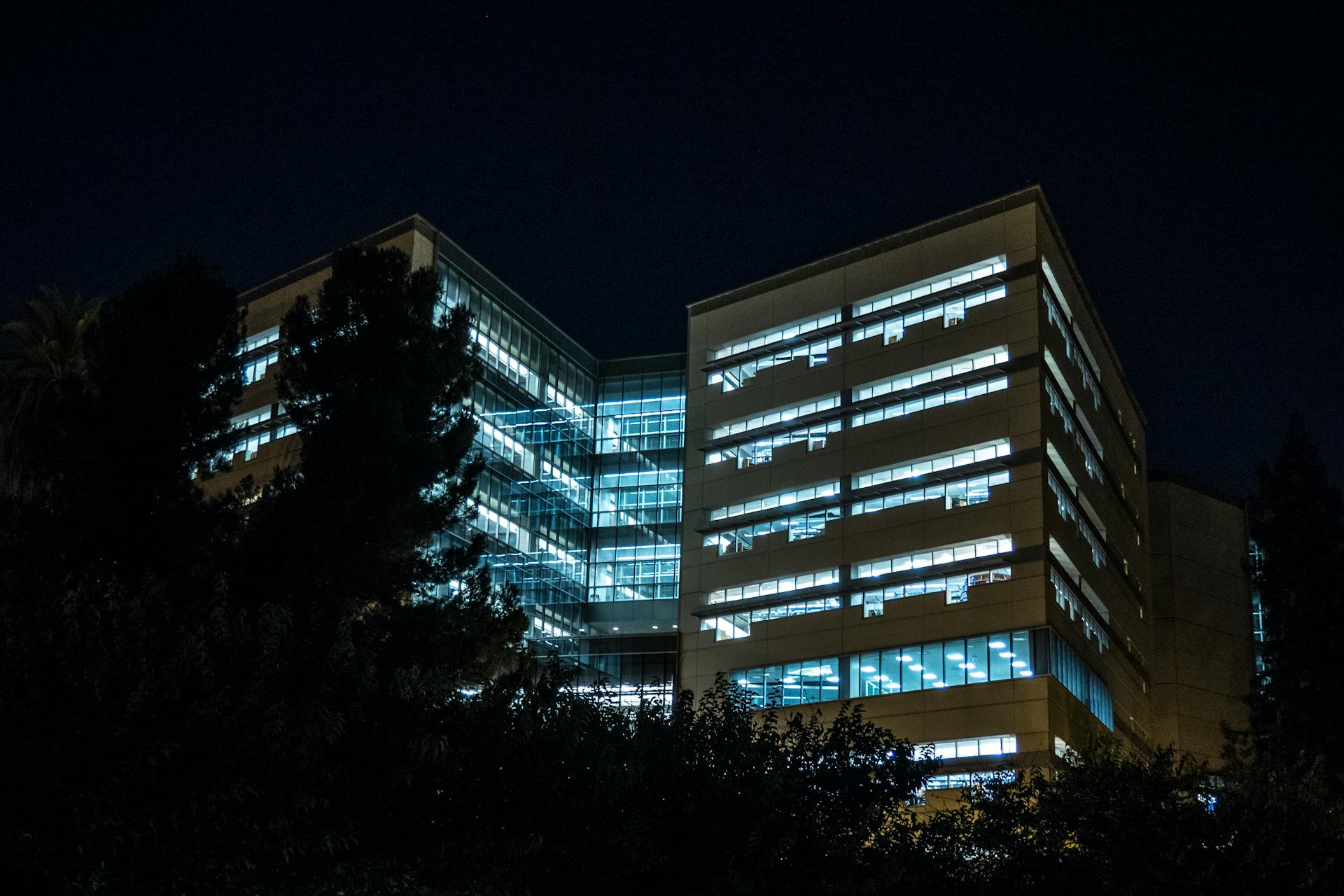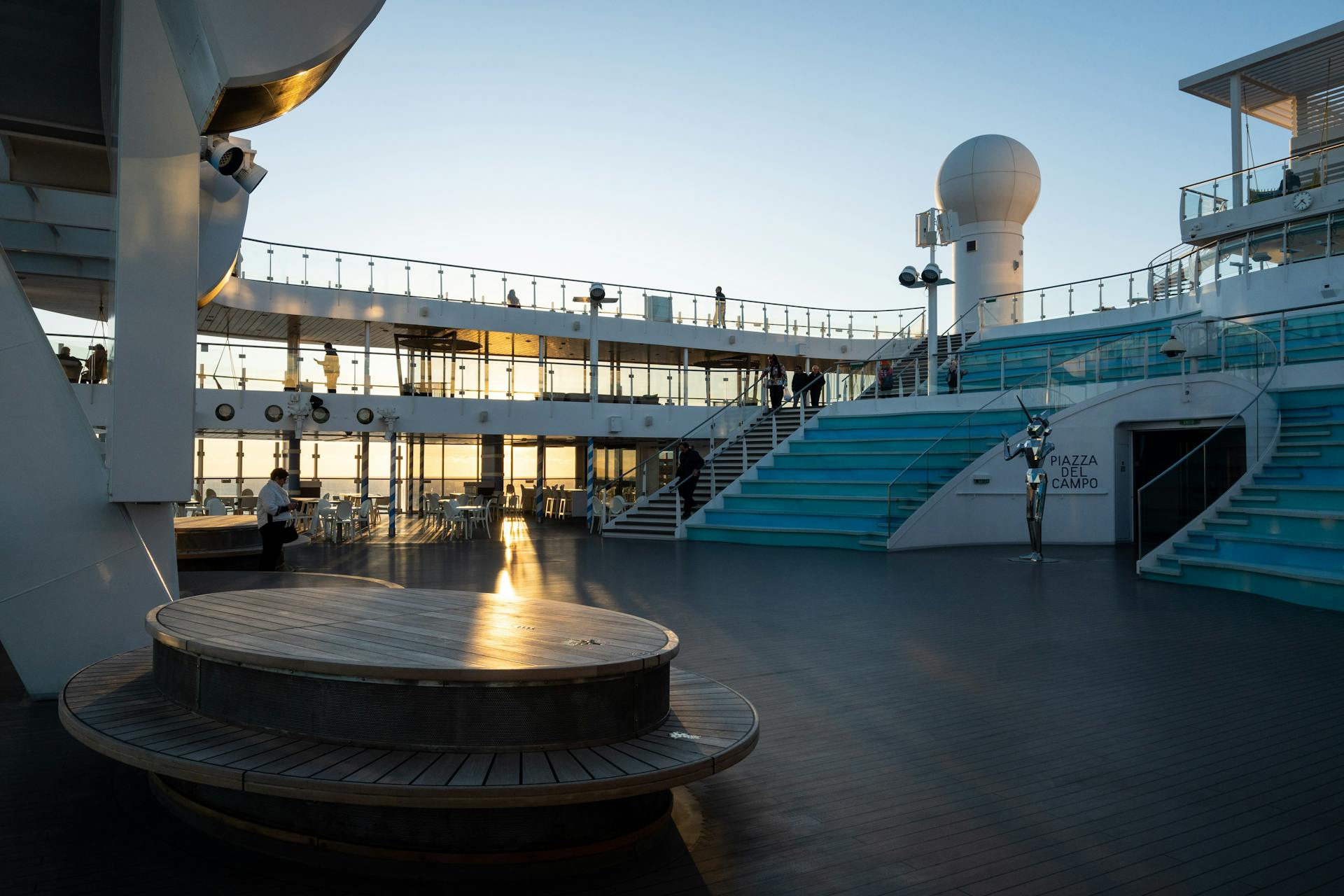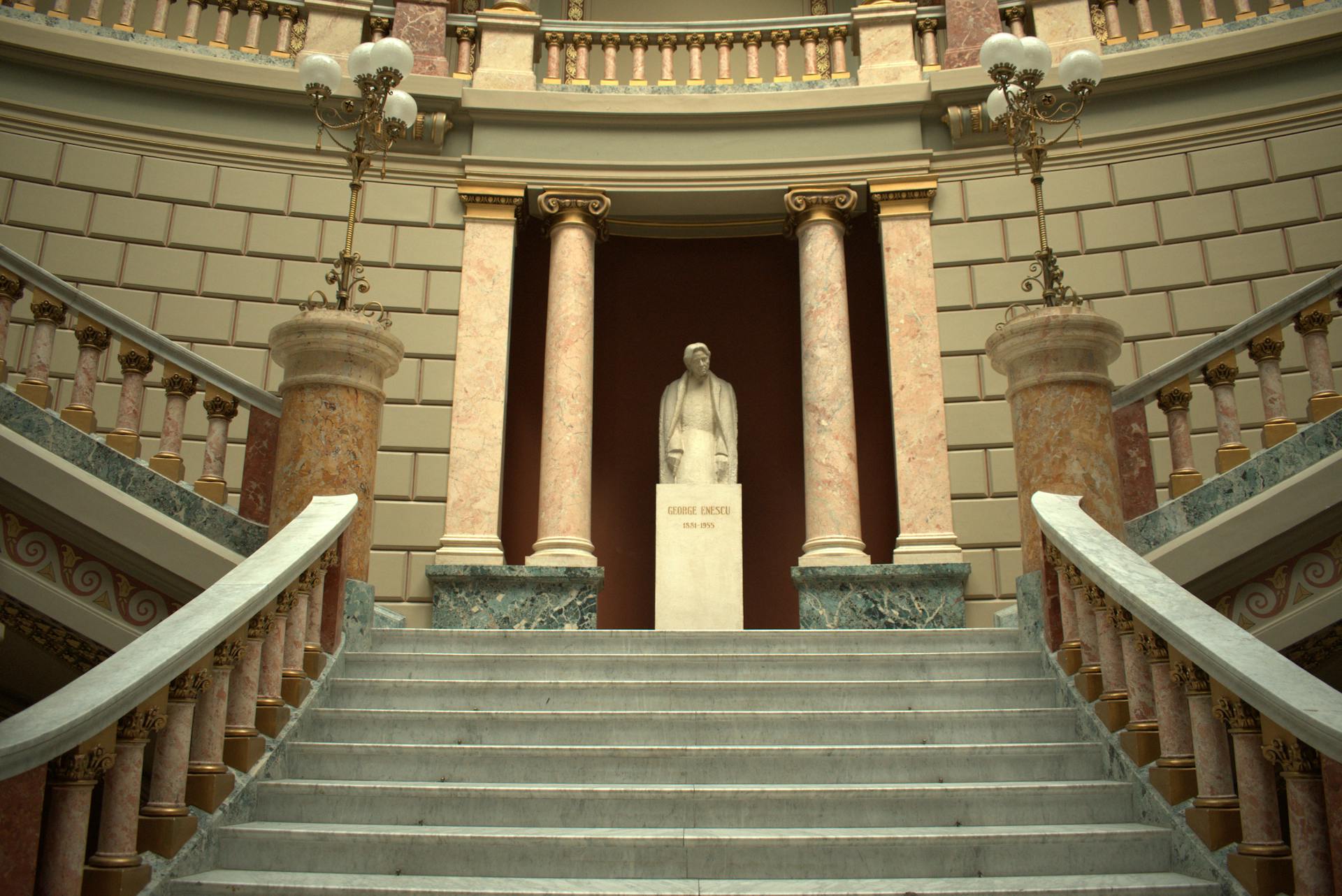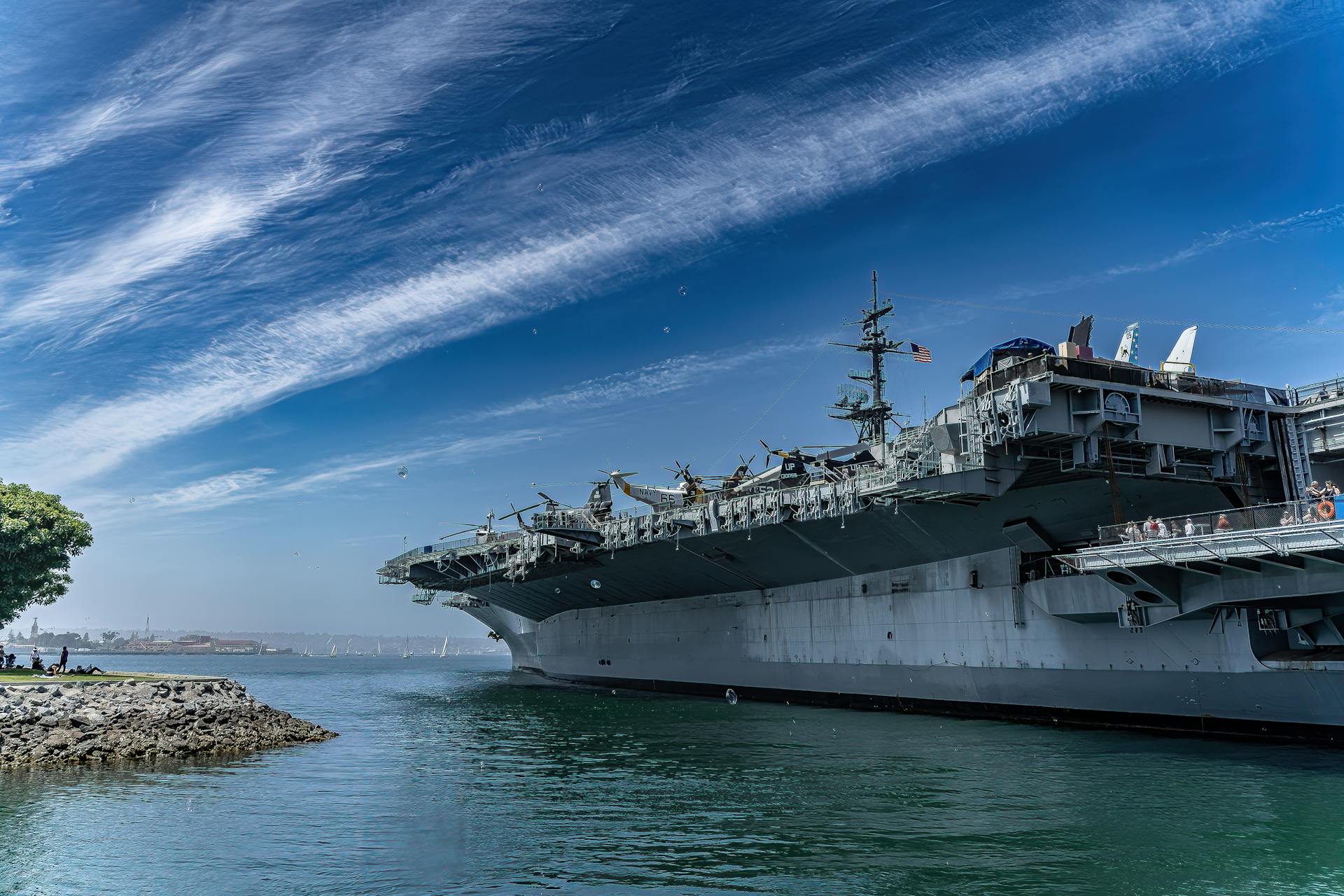
The USS George H. W. Bush is a Nimitz-class aircraft carrier that was commissioned in 2009. It's named after the 41st President of the United States, George H. W. Bush.
This ship is the tenth Nimitz-class carrier to be built and has a displacement of over 100,000 tons. The USS George H. W. Bush has a crew of over 5,000 sailors and officers.
The carrier is powered by two nuclear reactors, which provide the energy needed to run its propulsion system and support its various onboard systems. With a top speed of over 30 knots, the USS George H. W. Bush can travel quickly and efficiently across the globe.
The ship's air wing is equipped with a range of aircraft, including F/A-18 Hornets and F/A-18E/F Super Hornets. Its advanced radar and communication systems enable it to detect and track targets at long range.
For your interest: Rms Olympic Class
Key Features
The USS George H. W. Bush has some impressive features that make it a top-notch aircraft carrier.
One of the key features is an updated aviation fuel storage and distribution system, which allows for more efficient fueling and servicing.
This new system enables faster pit stops, requiring fewer people to get the job done.
The ship also boasts semi-automated refueling and servicing, which streamlines the process even further.
New deck locations have been added to provide faster and more efficient aircraft pit stops.
These modern deck locations are a game-changer for the crew, allowing them to work more efficiently.
Modernized aircraft launch and recovery equipment have also been implemented, making it easier to get planes in and out of the air.
Redesigned jet blast deflectors are another key feature, providing a safer and more efficient way to handle jet blast.
Recommended read: New York Yacht, Launch & Engine Company
Background and History
The USS George H. W. Bush has a rich history that spans several years. The contract to build the aircraft carrier was awarded to Northrop Grumman Shipbuilding Newport News on January 26, 2001.
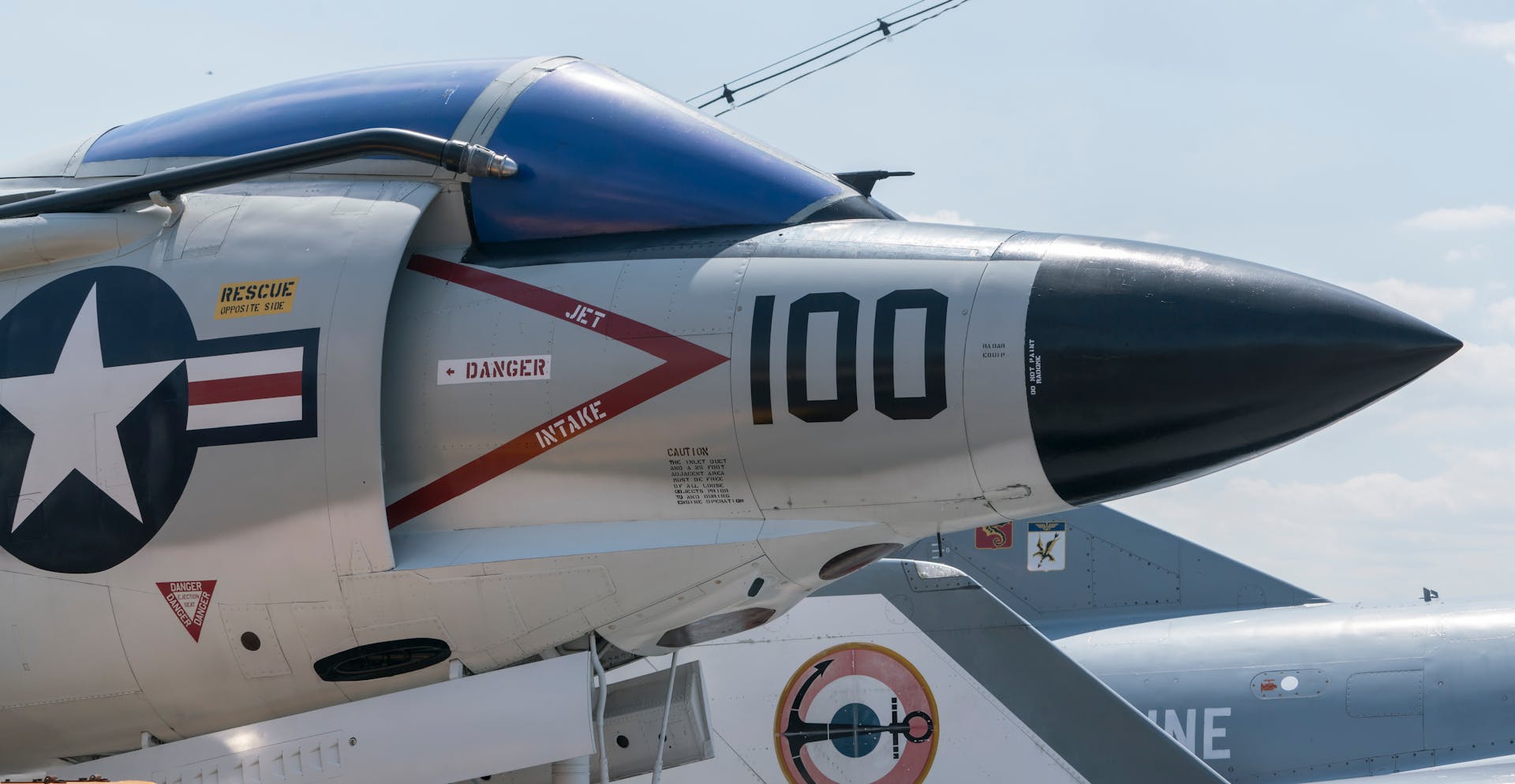
A naming ceremony was held on December 9, 2002, with former president George H. W. Bush in attendance. Secretary of the Navy Gordon R. England presided over the ceremony.
The first fixed-wing flights took place on May 19, 2009, with F/A-18 Super Hornets from Air Test and Evaluation Squadron conducting flight deck certification at Naval Air Station Patuxent River, Maryland.
Naming
The USS George H. W. Bush is a significant name in the history of US aircraft carriers. It's the second to be named after a naval aviator.
Forrestal was the first aircraft carrier to bear the name of a naval aviator. This distinction highlights the importance of naval aviation in the US military.
The USS George H. W. Bush is also notable for being named after a then-living former president. This makes it the second carrier to be named after a living former president, following Ronald Reagan.
Ronald Reagan was still alive when the USS Ronald Reagan was christened in 2001. This event marked a significant milestone in the history of US aircraft carriers.
Ship's Seal
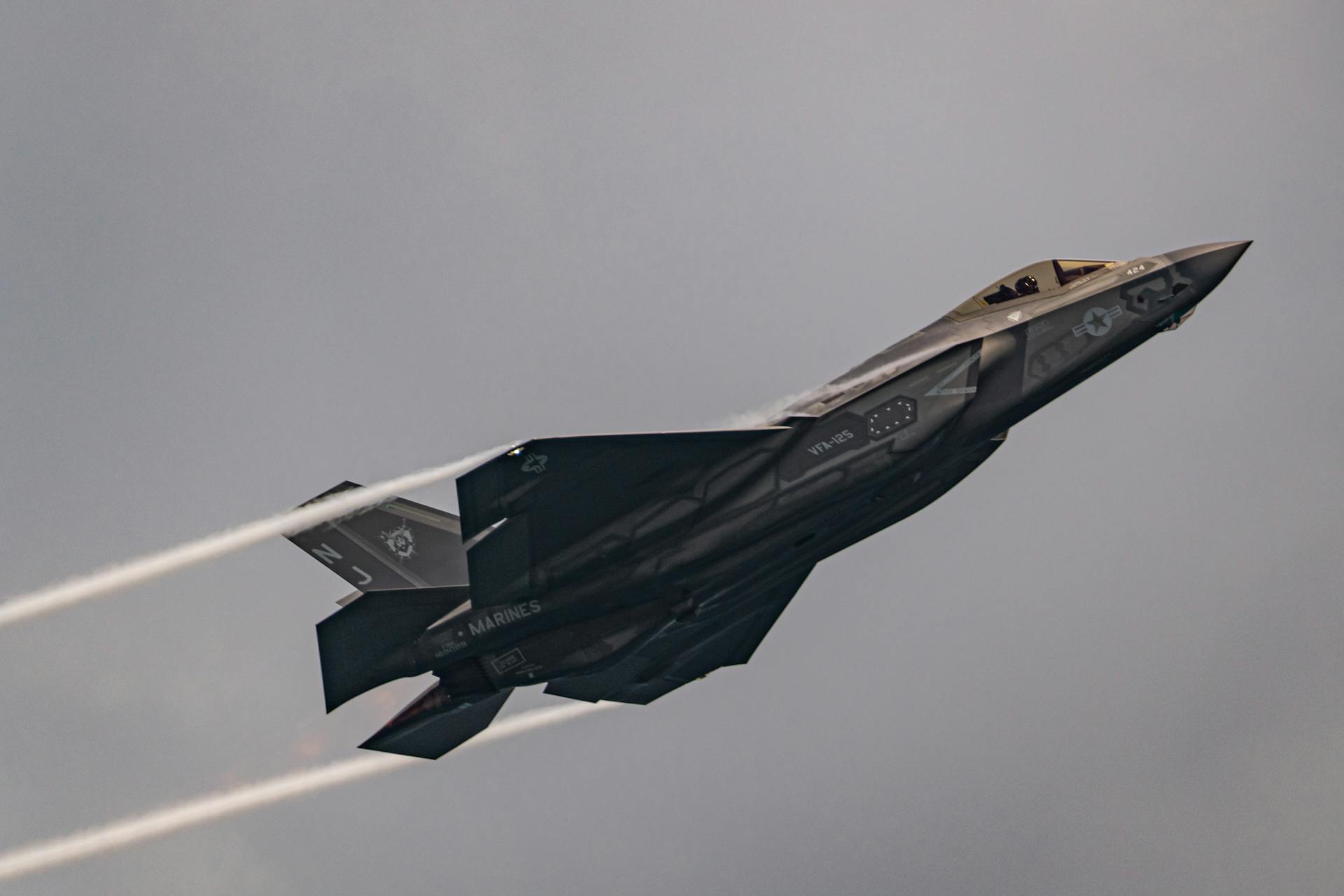
The ship's seal is a significant part of the vessel's identity, and it's packed with meaning.
Each element of the seal is carefully chosen to represent the ship's namesake, naval aviation, naval service, and the nation. The 41 white stars on the seal symbolize the 41st president, the ship's namesake.
The rays of light on the seal's horizon represent Bush's concept of a "thousand points of light", where he encouraged Americans to find meaning and purpose in serving something greater than themselves.
Fouled anchors and shields, centered on naval aviators wings, honor the ship's namesake's aviation history. This is a nod to Bush's time as a Navy pilot.
The ship's seal also features a graphic depiction of the aircraft carrier, symbolizing American strength and freedom.
If this caught your attention, see: 900 Bush St Sf Ca
History
The construction of the USS George H.W. Bush began with a contract awarded to Northrop Grumman Shipbuilding Newport News on January 26, 2001.
A significant milestone in the ship's history was the naming ceremony held on December 9, 2002, where former president George H.W. Bush attended.
Expand your knowledge: MV H. Lee White

Secretary of the Navy Gordon R. England presided over the ceremony, marking an important moment in the ship's development.
The first fixed-wing flights were conducted on May 19, 2009, when F/A-18 Super Hornets from Air Test and Evaluation Squadron at Naval Air Station Patuxent River, Maryland began flight deck certification.
Deployment and Trials
The USS George H. W. Bush has a long history of deployments and trials. Its maiden deployment in 2011 was a significant milestone for the ship, marking its first time at sea.
The ship was assigned to Carrier Strike Group Two and departed on May 11, 2011, for a seven-month deployment that took it across the Atlantic to Britain and Italy. It arrived at Naples, Italy on June 10, 2011.
The carrier returned to Norfolk on December 10, 2011, after a successful deployment that supported operations with the U.S. Navy's 5th and 6th fleets.
In 2024, the USS George H.W. Bush began sea trials after a major 10-month modernization upgrade.
Construction
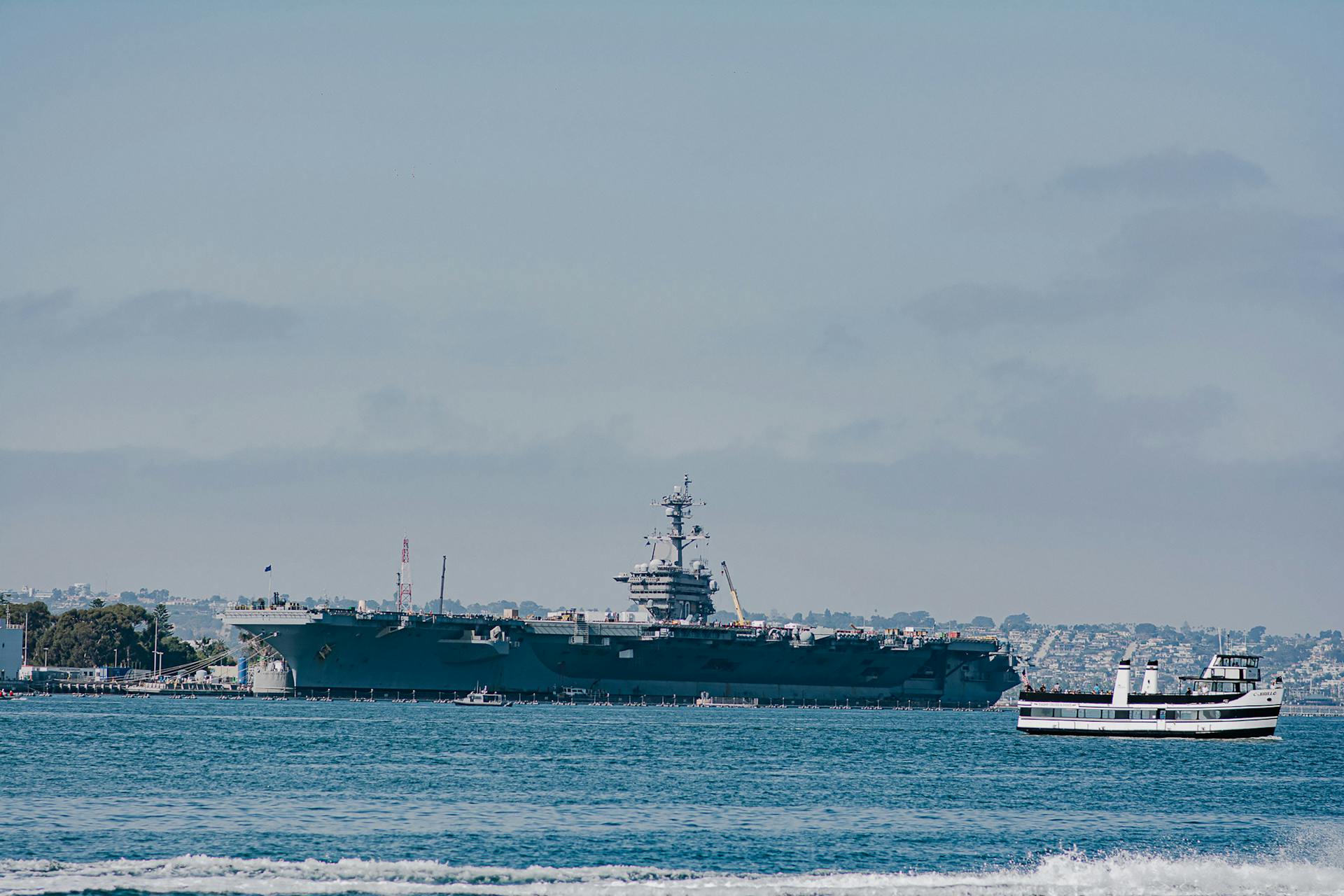
The construction of the USS George H. W. Bush was a significant milestone in its history. The ship was built at the Northrop Grumman Newport News shipyard's Dry Dock 12, the largest in the western hemisphere.
The keel laying ceremony took place on 6 September 2003, with former president George H. W. Bush serving as the keynote speaker. His initials were then welded onto a metal plate, which was permanently affixed to the ship.
The ship was constructed using a modular approach, where large sections were assembled and then lifted into place using a large crane. The bow placement occurred in March 2005, marking a major milestone in the construction process.
The island placement ceremony, also known as "stepping the mast", took place on 8 July 2006. This tradition dates back to the 1790s and is a symbol of good luck for U.S. Navy ships.
George H. W. Bush participated in the island placement ceremony, placing his naval aviator wings underneath the island. This was a special moment, as it marked a significant milestone in the ship's construction.
The ship was officially christened on 7 October 2006, with former president George H. W. Bush attending the ceremony. This was a historic moment, as he became the first president in history to participate in the christening of his namesake ship.
The catapult system testing took place on 25 January 2008, with former president George H. W. Bush signaling the launch of two "dead loads" off the deck of the carrier.
Maiden 2011 Deployment
The George H. W. Bush's maiden deployment in 2011 was a significant milestone for the carrier.
She was assigned to Carrier Strike Group Two for her first deployment, which began on May 11, 2011.
The carrier sailed across the Atlantic to Britain to participate in Exercise Saxon Warrior, held in the Western Approaches.
This exercise culminated in a simulated "Thursday War" scenario.
After participating in Exercise Saxon Warrior, the carrier moved towards Portsmouth, United Kingdom, anchoring adjacent to Stokes Bay from May 27 to 31, due to her large size and the naval base's insufficient nuclear berths.
The carrier then arrived at Naples, Italy on June 10, 2011.
Following a seven-month deployment, the carrier returned to Norfolk on December 10, 2011, supporting operations with the U.S. Navy's 5th and 6th fleets.
A unique perspective: Blue Carrier 1
Aircraft Carrier Begins Sea Trials
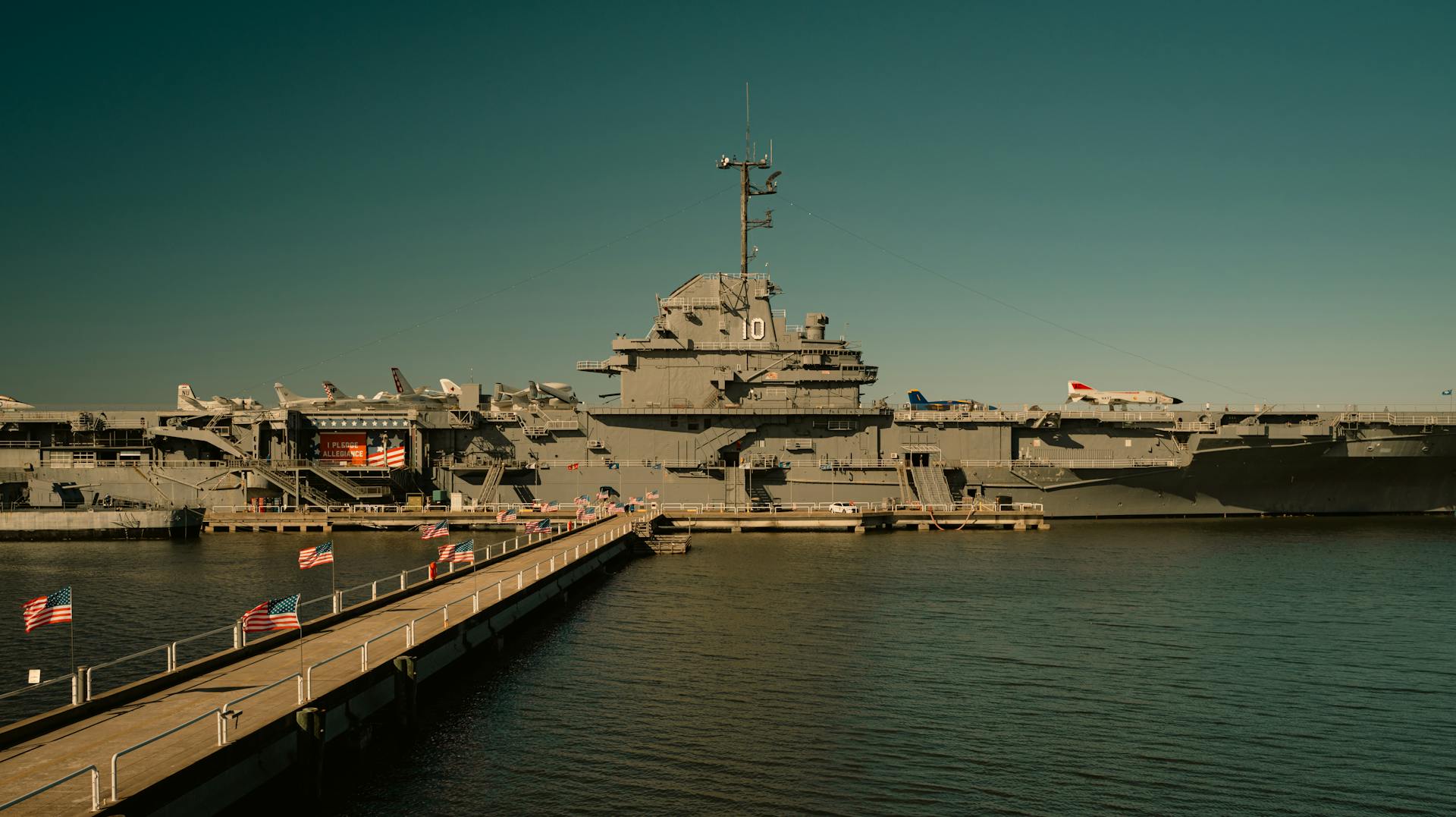
The USS George H.W. Bush has officially embarked on sea trials after a 10-month modernization upgrade.
The sea trials will rigorously test all upgraded systems and equipment, including propulsion, power generation, combat readiness, and various onboard systems.
The Nimitz-class aircraft carrier received a comprehensive overhaul during its availability period, enhancing its functionality and capability.
The upgrades include advanced systems for navigation, communications, weapons, and combat control, as well as ensuring compatibility with the latest aircraft and onboard technology.
The US Navy's Nimitz-class aircraft carriers undergo rigorous maintenance protocols to ensure operational readiness and longevity, including routine upkeep, significant overhauls, and nuclear refueling.
These protocols are tailored to address the unique demands of nuclear-powered vessels, and include periodic inspections, system upgrades, and repairs to critical components.
A pivotal maintenance event in a Nimitz-class carrier's lifecycle is the Refueling and Complex Overhaul (RCOH), which occurs once during a carrier's 50-year service life.
The RCOH is an extensive process that combines nuclear reactor refueling with comprehensive modernization efforts, and is typically conducted at specialized facilities like Huntington Ingalls Industries' Newport News Shipbuilding.
Readers also liked: Uss George Washington Rcoh Delays
Specific Information
The USS George H. W. Bush is a Nimitz-class supercarrier that serves as the flagship of Carrier Strike Group 2.
It was commissioned on January 10, 2009, and is named after the 41st President of the United States, George H. W. Bush.
The ship has a length of 1,092 feet and a beam of 257 feet, making it one of the largest warships in the world.
Its crew consists of approximately 5,000 personnel.
The USS George H. W. Bush is powered by two A1B nuclear reactors, which provide a top speed of over 30 knots.
It has a flight deck that is 257 feet wide and 844 feet long, with four arresting gear systems to help bring aircraft to a safe stop.
The ship is equipped with the Mk 57 Sea Sparrow missile system for defense against enemy aircraft.
It also has a combat direction center that serves as the nerve center for the ship's combat operations.
The USS George H. W. Bush is armed with a 5-inch gun, which is used for surface-to-surface engagements.
It has a total of 60 aircraft on board, including F/A-18 Hornets and F/A-18 Super Hornets.
The ship has a combat radius of approximately 1,200 nautical miles.
Frequently Asked Questions
Where is the USS George H.W. Bush currently at?
The USS George H.W. Bush is currently homeported in Norfolk, VA.
Sources
- https://en.wikipedia.org/wiki/USS_George_H._W._Bush
- https://georgeandbarbarabush.org/awards/uss-george-h-w-bush-cvn-77-scholarship
- https://www.navsource.org/archives/02/77.htm
- https://www.navysite.de/cvn/cvn77.html
- https://armyrecognition.com/news/navy-news/2024/uss-george-hw-bush-aircraft-carrier-begins-sea-trials-after-major-10-month-modernization-upgrades
Featured Images: pexels.com
